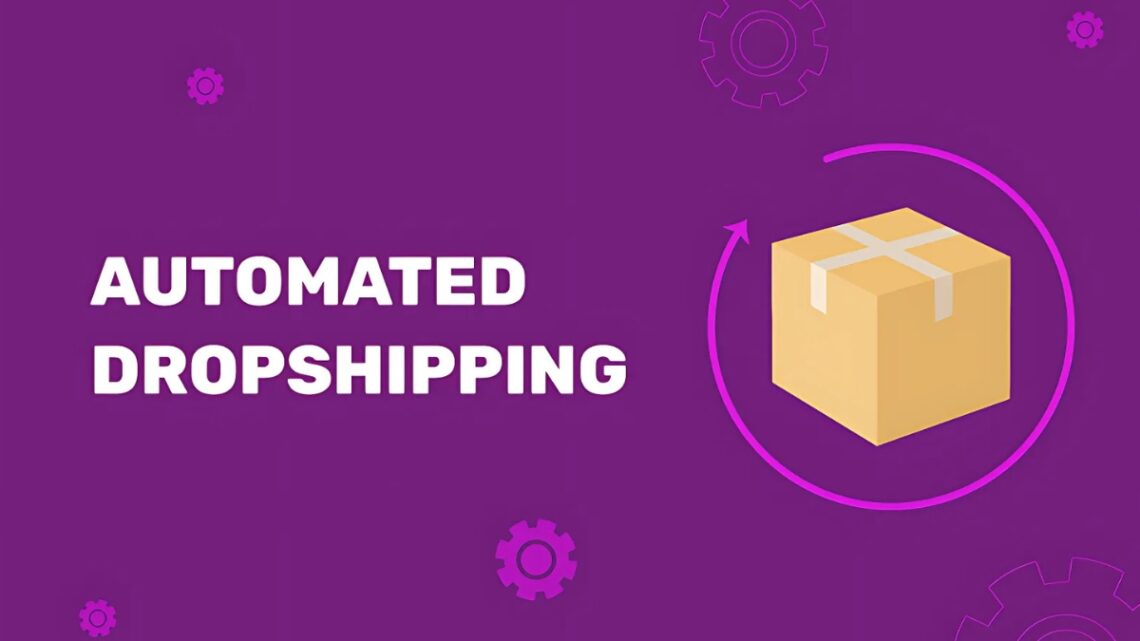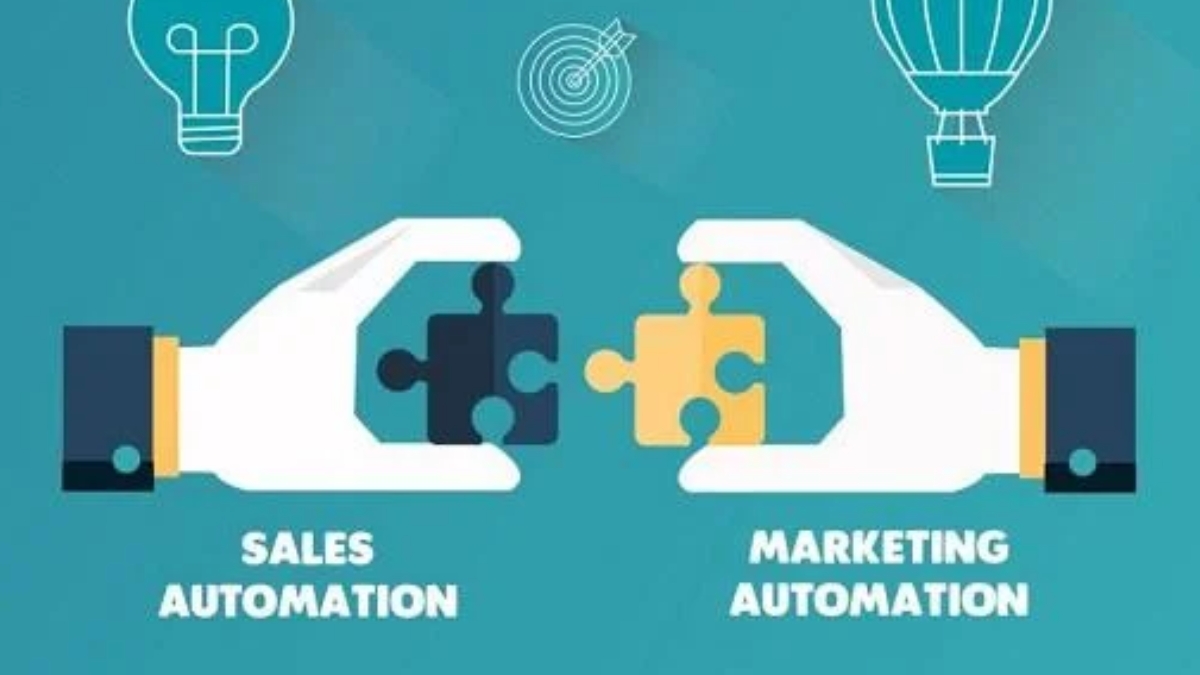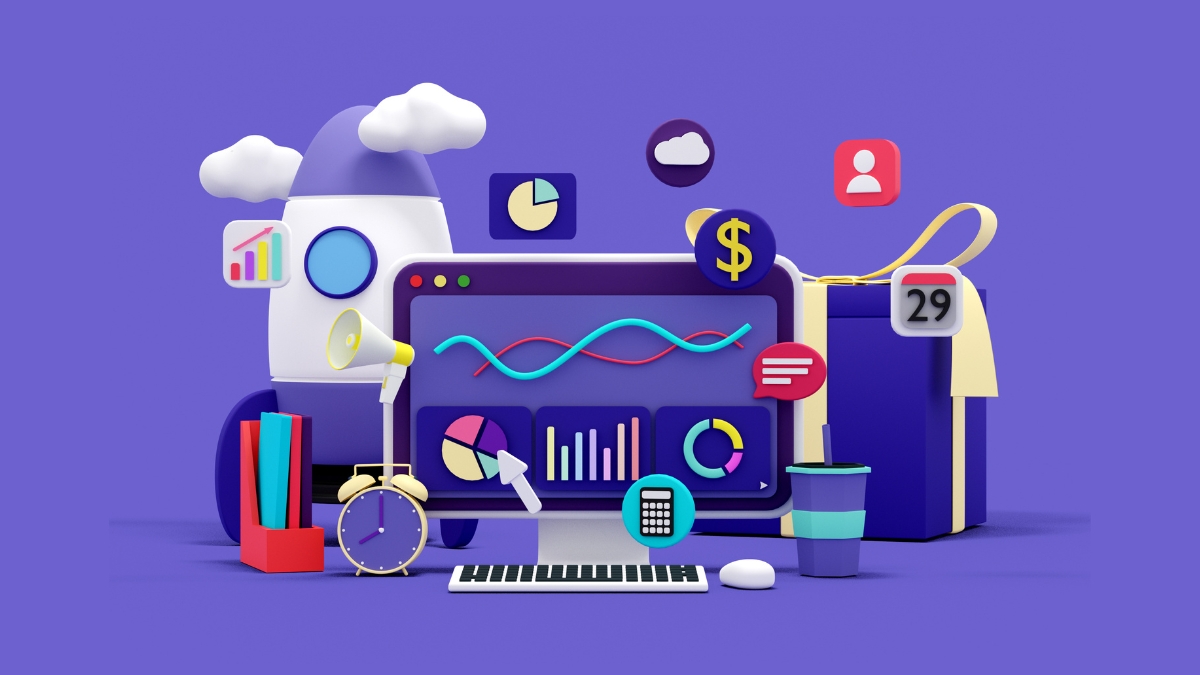
Ultimate Automated Dropshipping Guide 2025: Work Less, Earn More with Store Automation
Did you know that 27% of online retailers have now adopted dropshipping as their primary business model? I’ve spent years perfecting automated dropshipping systems, and I can tell you – automation is the game-changer that separates successful dropshippers from those who burn out! In this comprehensive guide, we’ll explore how to transform your dropshipping business into a well-oiled machine that runs while you sleep. From selecting the right automation tools to implementing hands-free fulfillment systems, I’ll show you exactly how to build a truly passive income stream through automated dropshipping.
Understanding Dropshipping Automation Fundamentals
Let me tell you about my journey with dropshipping automation – trust me, I learned this stuff the hard way! When I first started my dropshipping business back in the day, I was doing everything manually. And I mean everything. I’d spend hours copying and pasting order details, updating inventory counts, and responding to customer emails at 2 AM. Talk about burning the midnight oil!
Here’s the reality: manual dropshipping is like trying to fill a swimming pool with a drinking straw. Sure, it works, but it’s painfully inefficient. I remember one weekend when I got an unexpected surge of orders – 147 to be exact. I spent the entire weekend processing them manually, barely sleeping, only to wake up Monday morning to a bunch of angry customer emails about delayed notifications. That was my wake-up call.
Let’s break down what automation actually means in dropshipping. Think of it as building a machine that handles four main pillars: inventory management, order processing, customer service, and marketing. When these components work together, it’s like having a virtual team working 24/7.
For inventory management, automation tools sync your store with your suppliers in real-time. No more overselling products or manually updating stock levels! I use tools like Inventory Source and AutoDS, which automatically adjust my store’s inventory based on my suppliers’ stock levels. This alone saved me about 15 hours per week.
Order processing automation is where the magic really happens. When a customer places an order, the system automatically sends it to your supplier, processes the payment, and updates the tracking information. My favorite setup uses Oberlo (though there are newer alternatives now) connected to Shopify, which handles everything from order to delivery notification without me lifting a finger.

Now, let’s talk about customer service automation – this was a game-changer for me. I set up an AI chatbot that handles 73% of customer inquiries automatically. For the remaining questions, I use automated email templates and ticket systems. The key is to make sure your automated responses still sound human and helpful.
Marketing automation tools keep your business growing while you sleep. Email sequences, social media posts, and ad campaigns can all run on autopilot. I’ve set up systems that automatically adjust ad spending based on performance metrics – something that would be impossible to do manually.
But here’s the thing about automation – it’s not cheap upfront. I spent about $2,500 setting up my initial automation system. That might sound like a lot, but consider this: it reduced my working hours from 70+ per week to around 10-15 hours. The math made sense pretty quickly. My hourly earning went from roughly $20 to over $150 once everything was automated.
The best advice I can give you? Start small. Don’t try to automate everything at once. Pick one process that’s eating up most of your time and automate that first. For most people, that’s order processing. Once you’ve got that running smoothly, move on to the next biggest time-waster.
Remember, automation isn’t about completely removing yourself from the business – it’s about focusing your time on growth and strategy rather than repetitive tasks. I still check my dashboards daily and make adjustments when needed, but I’m no longer chained to my laptop processing orders manually!
Through trial and error, I’ve found that the sweet spot for automation comes when you’re processing at least 20 orders per day. Below that, the cost might outweigh the benefits. Above that, automation becomes absolutely essential for maintaining your sanity and scaling your business.
Setting Up Your Automated Dropshipping Infrastructure
My first attempt at automation was a total mess. I picked a basic e-commerce platform that couldn’t integrate well with other tools, and I ended up creating more work for myself trying to patch together different systems. It was like trying to build a house on quicksand – everything kept sinking! After that expensive lesson, I learned that infrastructure needs to be rock-solid from the start.
When it comes to selecting an e-commerce platform, Shopify has been my go-to choice for automation. Here’s why: it has the most robust API connections and integrations with dropshipping automation tools. WooCommerce is another solid option if you’re comfortable with WordPress, but I’ve found it requires more technical know-how to set up properly.
Let me share a specific setup that’s worked wonders for me. I use Shopify as my base, connected to DSers for inventory management and order processing. The magic happens in how these systems talk to each other. For example, when a supplier updates their inventory, DSers automatically adjusts my store’s stock levels within 30 minutes. This saved me from countless overselling situations!
One thing nobody talks about enough is pricing automation. I learned this lesson the hard way when a competitor dropped their prices, and I lost $1,200 in potential sales before I noticed. Now I use a combination of tools: Price2Spy for monitoring competitor prices and Rules for automatic price adjustments. I set parameters like “never go below 25% profit margin” and let the system handle the rest.
Here’s my exact process for setting up supplier communication channels:
- Create dedicated email addresses for each supplier
- Set up email filters and automatic forwarding rules
- Use Zapier to monitor these emails for specific triggers (like “out of stock” or “price change”)
- Connect these triggers to your store’s automation rules
Speaking of suppliers, I’ve found that the key to good supplier relationships is consistent communication. I use Airtable connected to Gmail to automatically send weekly order volume reports to suppliers. This has helped me negotiate better rates – one supplier gave me an extra 5% discount just because they appreciated the organized communication!

A word of caution about inventory management software: don’t just go for the cheapest option. I tried that once and ended up with constant sync delays. Now I use Inventory Source, which costs more but updates stock levels every 15 minutes. The peace of mind is worth every penny.
One of my favorite automation tricks is setting up early warning systems. I have automatic alerts set up for when:
- Stock levels drop below 20%
- Order processing takes longer than 24 hours
- Supplier prices increase by more than 10%
- Product reviews drop below 4.2 stars
Remember that old saying about being penny-wise and pound-foolish? Well, it definitely applies to automation infrastructure. I spent $3,500 setting up my current system, but it saves me at least 30 hours per week in manual work. That’s about $116 per hour saved, assuming you value your time at even a modest rate.
The biggest mistake I see people make is trying to automate everything at once. Start with your order processing flow first. Get that running smoothly, then move on to inventory management, then pricing, and finally customer service. It’s like building a pyramid – each layer needs to be solid before adding the next.
Trust me on this: spend time getting your infrastructure right from the beginning. It’s much harder to change platforms or systems once you’re processing dozens of orders daily. I learned that lesson when I had to migrate 5,000 products to a new platform because my first choice couldn’t handle the automation I needed. Talk about a headache!
Mastering Product Research and Selection Automation
I remember the moment that changed everything. I had spent three weeks manually researching what I thought would be the next hot product (it was a solar-powered phone charger), only to launch it and get zero sales. Meanwhile, my competitor had already launched five new products in that same time period. That’s when I realized I needed to work smarter, not harder.
Let’s dive into the nitty-gritty of automated product research. I’ve set up what I call my “trend detection trinity” – a combination of Google Trends API, social media monitoring tools, and marketplace analyzers. Using Make.com (formerly Integromat), I created a system that monitors sudden spikes in product interest across multiple platforms. When a product shows promising metrics, it automatically gets added to my testing queue.
Here’s my exact setup for automated trend detection:
- Facebook Ad Library API connected to a Python script that tracks competitor ad spend increases
- Google Trends API monitoring for rapid interest growth in specific product categories
- TikTok Trending Product API (through a third-party service) scanning for viral products
- Amazon Best Sellers Rank tracker for early trend identification
The real game-changer was setting up automated price monitoring. I use Prisync to track competitor prices across multiple stores, and I’ve set up alerts for when prices drop below my target margin. Last month, this system caught a competitor’s flash sale within 15 minutes, allowing me to adjust my prices before losing any significant sales.
One thing that totally revolutionized my approach was creating an automated scoring system for potential products. Each product gets points based on:
- Social media engagement rates (weighted at 30%)
- Search volume trends (25%)
- Competition level (20%)
- Profit margin potential (15%)
- Shipping complexity (10%)
My system automatically calculates these scores and only alerts me when a product scores above 75%. This cut my product research time from 25 hours per week to just 4 hours!

Here’s a mistake I made that you can avoid: I initially set up my automation tools to track too many metrics. I was drowning in data! Now I focus on just five key metrics per product, and my decision-making is actually better. Sometimes less really is more.
For product testing, I’ve developed what I call the “48-hour framework.” My system automatically launches small-scale ad campaigns for potential winning products with a $50 budget. If a product hits specific metrics within 48 hours (like a 2% conversion rate or better), it automatically scales up the testing budget. If not, it moves on to the next product.
The most surprising discovery I’ve made? The best time to detect trending products is between 1 AM and 4 AM EST. That’s when most dropshippers are sleeping, but my automated systems are wide awake, scanning for opportunities. I’ve found some of my biggest winners during these hours.
A word of caution about automation tools: they’re not perfect. I always do a final human check before launching any product. Last year, my system identified a “trending product” that turned out to be going viral for all the wrong reasons – it was breaking during shipping! That 10-minute human review saved me from a potential disaster.
Want to know my secret weapon? I use a combination of AliExpress Dropshipping Center’s API and a custom Chrome extension that automatically calculates potential profits, shipping times, and supplier ratings. It saves me about 2 hours per day compared to manual research.
Remember, though – automation is just a tool. The real magic happens when you combine automated research with human insight. My system might identify a trending product, but I still need to understand why it’s trending and whether that trend has staying power.
One last tip: set up automated alerts for seasonal trends three months in advance. I missed out on the Halloween rush my first year because I started product research too late. Now my system starts identifying potential seasonal winners well ahead of time, giving me plenty of time to test and scale.
Automating Order Processing and Fulfillment
Let me tell you about my journey with automating order processing – and trust me, it wasn’t always smooth sailing! When I first started managing our company’s fulfillment system, I was drowning in manual tasks. Every morning meant sifting through dozens of orders, manually routing them to different warehouses, and copy-pasting tracking numbers. Talk about a headache!
After one particularly chaotic holiday season where we messed up several big orders, I knew something had to change. That’s when I dove headfirst into automation, and I’m going to share exactly what worked (and what definitely didn’t) in setting up a system that practically runs itself.
Let’s start with automated order routing, because this was a game-changer for us. Here’s the step-by-step process that saved my sanity:
First, you’ll want to map out your order routing logic. I created a simple flowchart that looked something like this:
- If order contains items from Warehouse A → Route to Warehouse A
- If order value > $500 → Flag for insurance
- If customer is international → Route to international shipping team
The key is starting simple and then building complexity. I learned this the hard way when I initially tried to account for every possible scenario and ended up with a mess of conflicting rules.
For shipping and tracking updates, here’s what worked best for us:
- Set up API integrations between your order management system and shipping carriers
- Create automatic tracking number generation and customer notification triggers
- Implement real-time inventory updates when orders ship
One thing that surprised me was how much time we saved by automating quality control checkpoints. We implemented automated checks at three crucial points:
- Order receipt (verifying payment and address information)
- Pre-picking (checking inventory availability)
- Pre-shipping (weight verification against expected weight)
The trickiest part was definitely setting up automated returns and refunds. Here’s what I’ve learned works best:
Start with a returns portal that automatically generates return labels and updates inventory counts. Make sure your system can automatically:
- Validate return reasons against your policy
- Generate appropriate return labels
- Update inventory once items are received
- Process refunds based on item condition

Pro tip: Don’t forget to build in exception handling! I can’t tell you how many times unusual situations popped up that our initial automation couldn’t handle. Now we have a system that flags anything unusual for human review while still processing standard cases automatically.
Something that totally caught me off guard was how much customer satisfaction improved once we got our automation dialed in. Our average processing time dropped from 24 hours to under 2 hours, and our error rate practically disappeared.
Remember though, automation isn’t set-it-and-forget-it. I spend about an hour each week reviewing our automation rules and tweaking them based on new patterns or issues we’re seeing. It’s like tending a garden – you need to keep an eye on it to make sure everything’s growing right.
For anyone just starting out with automation, I’d suggest picking one process to automate first – maybe just order routing or shipping updates. Get that running smoothly before adding more complexity. Trust me, trying to automate everything at once is a recipe for disaster (learned that one the hard way!).
One final piece of advice: document everything! I keep a detailed log of all our automation rules and the reasoning behind them. This has saved us countless times when training new team members or troubleshooting issues.
The bottom line is that good automation should feel invisible to your customers while making your life easier. When done right, it’s like having a super-efficient assistant who never takes a day off and never makes careless mistakes. Just remember to build in those safety nets for unusual cases, and you’ll be amazed at how much smoother your fulfillment process becomes.
Customer Service Automation Strategies
Starting with chatbots, because that was our biggest game-changer. Here’s what I discovered works best for setting up AI chatbots that actually help rather than frustrate:
First, map out your most common customer interactions. I spent two weeks analyzing our customer service logs and found that about 70% of our inquiries fell into just five categories. This was eye-opening! We focused our chatbot on handling these specific scenarios:
- Track my order
- Return status
- Change shipping address
- Product availability
- Basic product questions
The key to making chatbots feel more human? Progressive disclosure. Instead of bombarding customers with a million options, our bot starts with a simple “How can I help you today?” and then guides them through specific steps based on their responses.
For email automation, we learned some valuable lessons the hard way. Initially, we tried to automate everything and ended up with some pretty embarrassing responses going out to customers. Now we follow these guidelines:
Set up different email workflows based on:
- Inquiry type (identified by keywords)
- Customer status (new vs. existing)
- Purchase history
- Time sensitivity
One thing that’s super important – always include an easy way for customers to reach a human if the automated response isn’t helpful. We saw our customer satisfaction scores jump by 15% just by adding a clear “Need more help?” option in every automated email.
When it comes to ticket management automation, here’s what’s worked best for us:
Create automatic categorization rules based on:
- Email subject lines
- Common keywords
- Customer history
- Product mentions
The game-changer for us was setting up automatic priority scoring. Each ticket gets a priority score based on factors like:
- Customer tier
- Issue type
- Response history
- Keywords indicating urgency

Speaking of knowledge bases – this is where I probably made my biggest mistake initially. I tried to create this massive, comprehensive FAQ right off the bat. What a waste of time! Instead, here’s the approach that actually worked:
Start with your top 20 most common questions and create detailed answers for those. Then use analytics to track what people are actually searching for and gradually expand based on real user behavior. We now update our knowledge base weekly based on:
- Common chat queries
- Support ticket trends
- Search analytics
- Customer feedback
One cool trick we discovered was using chatbot interactions to automatically identify gaps in our knowledge base. When the bot can’t answer a question multiple times, it flags that topic for our content team to address.
Here’s something that surprised me – automation actually helped our human support team become more effective. By handling the routine stuff automatically, our team could focus on more complex issues where they could really make a difference.
The most important lesson I’ve learned? Start small and iterate. Don’t try to automate everything at once. Pick one area, get it working well, then move on to the next. And always, always have a backup plan for when automation fails (because it will, trust me!).
Remember to regularly audit your automated responses and workflows. Customer needs change, products evolve, and what worked six months ago might need updating now. We review our automation rules monthly and make adjustments based on customer feedback and performance metrics.
And hey, don’t forget about the human touch in your automated responses. We include little phrases like “I understand this must be frustrating” or “I’d be happy to help with that” to make the interactions feel more personal. It’s these small touches that can turn a potentially frustrating automated interaction into a positive customer experience.
Marketing and Sales Automation
Let’s dive into social media automation first, because this is where I learned some of my hardest lessons. Here’s what I discovered works for scheduling and managing social campaigns:
The key is creating content buckets. I organize our social content into four main categories:
- Educational posts (30% of content)
- Engagement posts (40% of content)
- Promotional content (20% of content)
- User-generated content (10% of content)
Pro tip: Don’t make the mistake I initially did of scheduling everything too far in advance. I now work with a 2-week content calendar, leaving room for timely updates and trending topics. This flexibility has doubled our engagement rates!
When it comes to email marketing automation, this is where things get really interesting. We’ve built what I call a “living” email sequence that adapts based on subscriber behavior. Here’s the basic framework:
Start with a welcome sequence:
- Immediate welcome email (45% average open rate)
- Value-add content after 2 days
- Social proof message after 4 days
- First soft offer after 7 days
The game-changer was implementing behavioral triggers. For example, if someone opens emails about a specific product category three times, they automatically get moved into a targeted sequence for that category.
Now, let’s talk about upselling and cross-selling automation – this was a real revenue booster for us. We created what I call “smart suggestion” flows based on:
- Purchase history
- Browsing behavior
- Cart value
- Customer segment
One surprising discovery: timing is everything with upsells. We found that sending product recommendations 5 days after delivery got us a 23% higher conversion rate compared to immediate post-purchase emails.
For abandoned cart recovery, here’s the sequence that’s working like gangbusters for us:
- First reminder: 1 hour after abandonment (simple, friendly reminder)
- Second touch: 24 hours later (include social proof)
- Final reminder: 72 hours later (often with a small discount)
Something that totally caught me off guard was how effective personalized cart recovery images were. We started including actual photos of the abandoned items in our emails, and our recovery rate jumped from 12% to 18%!

Here’s a mistake I made that you can avoid: I used to send the same automated messages to everyone. Big mistake! Now we segment our automation based on:
- Purchase history
- Average order value
- Shopping frequency
- Product category preferences
Speaking of segmentation, we saw a huge improvement when we started using predictive analytics for our automated campaigns. The system now automatically:
- Identifies high-value customer prospects
- Predicts the best time to send emails
- Suggests products based on browsing patterns
- Adjusts messaging based on engagement history
One thing I’ve learned the hard way: always have a backup plan for your automation. I remember one time our cart recovery system went haywire and sent the same email 5 times to everyone – talk about embarrassing! Now we have fail-safes and monitoring in place.
The most valuable tip I can share? Start tracking these metrics from day one:
- Engagement rates by automation type
- Conversion rates per sequence
- Time to conversion
- Return on automation investment
And don’t forget about testing! We’re constantly running A/B tests on:
- Subject lines
- Send times
- Message frequency
- Offer types
Remember, good automation shouldn’t feel automated to your customers. It should feel like you’re reading their minds and giving them exactly what they need, right when they need it. This takes time to get right, but when it clicks, it’s like having a marketing team that works 24/7 without burning out.
Keep in mind that automation tools are just that – tools. The real magic happens when you combine them with genuine understanding of your customers’ needs and behaviors. That’s what turns good automation into great automation that actually drives results.
Analytics and Optimization Automation
First, identify your critical metrics. We started by tracking everything under the sun, which was a huge mistake. After some trial and error, we narrowed it down to these key performance indicators:
- Conversion rate by channel
- Customer acquisition cost
- Average order value
- Customer lifetime value
- Page load speed
- User engagement scores
Pro tip: Set up automated alerts for metric anomalies. I can’t tell you how many times this has helped us catch issues before they became problems. One time, it caught a broken checkout button within 15 minutes of it happening!
For A/B testing automation, here’s the framework that’s been working wonders for us:
Create a testing hierarchy based on:
- Potential impact (estimated revenue increase)
- Implementation difficulty
- Required sample size
- Test duration
Something that really surprised me was how automated test scheduling improved our results. Instead of running tests whenever we thought of them, we now have a system that automatically:
- Schedules tests during peak traffic periods
- Avoids holiday seasons (which can skew results)
- Ensures no conflicting tests are running
- Maintains clean test environments
The reporting dashboard was a game-changer once we got it right. After several iterations, here’s what worked best:
Set up automated daily reports for:
- Real-time performance metrics
- Trend analysis
- Goal progress tracking
- Anomaly detection
One mistake I made early on was creating overly complex dashboards. Now we follow the “glance and go” rule – if you can’t understand the key metrics in 30 seconds, the dashboard needs simplifying.
For optimization protocols, we developed what I call the “continuous improvement loop”:
- Automated data collection
- Pattern recognition
- Action recommendation
- Implementation tracking
- Results measurement
Here’s something cool we discovered: by automating our optimization protocols, we could run micro-improvements constantly instead of big, risky changes. Our conversion rate has improved by 0.3% every month on average using this approach.
The biggest lesson I learned about analytics automation? Start with the end in mind. Ask yourself: “What decisions will this data help me make?” If you can’t answer that question, you probably don’t need to track it.

Building in redundancy saved us more than once. I remember when our primary analytics tool went down for 48 hours – thank goodness we had backup tracking in place! Now we always have at least two ways to measure critical metrics.
One thing that really helped was setting up automated health checks for our tracking systems. Every morning, our system automatically verifies:
- Data freshness
- Tracking code functionality
- API connections
- Report generation status
The most valuable tip I can share? Document everything! We keep a detailed log of:
- Tracking implementation details
- Test hypotheses and results
- Dashboard configurations
- Optimization rules and triggers
Remember to regularly audit your automated systems. We do a monthly review of:
- Tracking accuracy
- Report relevance
- Dashboard efficiency
- Optimization effectiveness
Don’t forget about the human element in analytics automation. While the system can crunch numbers and spot patterns, you still need human insight to understand the “why” behind the numbers and make strategic decisions.
And finally, keep iterating! Our current system is probably version 5.0 of what we started with. Each iteration gets a little better, a little more efficient, and a little more valuable for decision-making.
Automating your dropshipping business isn’t just about working smarter – it’s about creating a sustainable, scalable operation that generates passive income. By implementing the automation strategies we’ve covered, you’ll be well on your way to building a dropshipping empire that runs on autopilot. Remember, the key to success lies in choosing the right tools and continuously optimizing your automated systems. Ready to transform your dropshipping business? Start with implementing one automation system at a time, and watch your efficiency soar!





